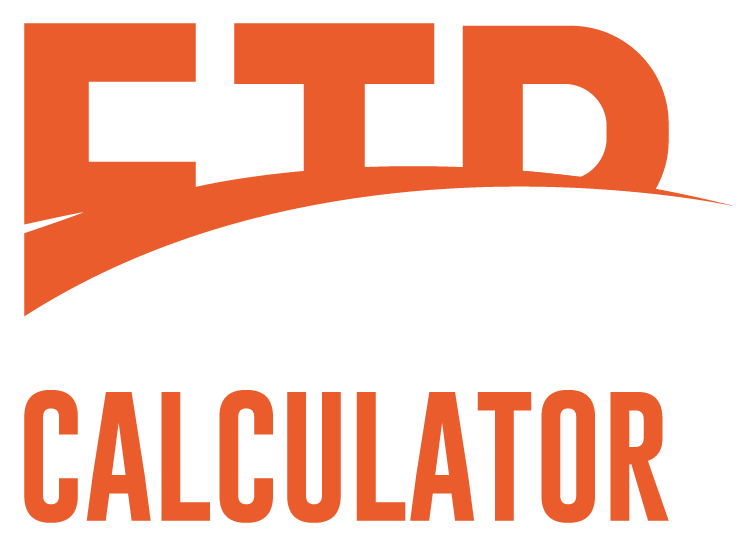Training Stress Score (TSS) Calculator allows you to calculate your training intensity and its results on your body during a training session. You can calculate your TSS using our TSS Calculator by following these steps:
- Enter your Normalized Power, Duration, and your FTP of your Cycling session in the appropriate fields.
- Click the ‘Calculate TSS’ button to calculate your Training Stress Score.
Table of Contents
ToggleWhat is TSS (Training Stress Score)?
TSS stands for Training Stress Score is an assessment of a workout’s training load based on intensity and duration. Training Stress Score is determined by combining IF (intensity factor) and duration to measure the “hardness” of a training session based on the extent of physiologic responses to training. TSS, in simplest terms, calculates the “cost” of a workout on your body. The higher your estimated TSS score, the more tired you will feel.
How is TSS Calculated by Using TSS Calculator?
The following equation calculates TSS:
Training Stress Score = (sec x NP x IF) / (FTP x 3600) x 100
sec: duration of the session in seconds
NP: Normalized Power
IF: Intensity Factor
FTP: Functional Threshold Power
Can we use the TSS score as a measure of Fitness?
It is crucial to note that not all TSS scores are created equal; now, what exactly do we mean by this? TSS is calculated using both the length and intensity of your training. You can go for a 3-hour easy ride and have your TSS equal to a 90-minute VO2 max interval session. But clearly, one of these sessions will leave you more physically drained than the other.
What is the reason for that? The TSS score is not incorrect or useless, but we see it from the wrong angle. Not all TSS numbers are created equal, and we cannot always interpret the same number as indicating the same level of effort.
You used a different energy system throughout your easy long ride than you did during your VO2 max repetitions. One session allowed you to stay in Zones 1 and 2, while the other had you slipping into Zone 5 many times. As a result, while each workout was strenuous in its own right, the same score did not imply the same degree of recovery required between sessions.
Power and Heart Rate Based TSS
Cycling’s default calculating technique is power-based TSS training. For power-based TSS to be correct, an FTP (Functional Threshold Power) must be determined, and power zones must be defined based on this. TSS can still be calculated if you do not have power-based measures and employ heart rate-based training.
Heart rate TSS, often known as hrTSS, is a less accurate approach for calculating your TSS after an exercise. While hrTSS is accurate for steady-state efforts or endurance rides, it is significantly less accurate when intervals are included. hrTSS is calculated based on the amount of time you spend in each heart rate zone depending on your Threshold Heart Rate during your training.
When there are big or frequent changes in your heart rate data, such as data post-interval sessions, it is difficult to calculate an accurate TSS since it takes time for your HR to normalize before, during, and after exercise.
If you don’t have a power meter or are attempting to measure TSS for an activity that isn’t heart rate or power-based, RPE is a decent estimate. You will need to assess the perceived exertion of the activity as well as the length of the activity.
What is the use of TSS in Training?
TSS Calculator is an excellent tool to calculate estimated TSS score and the identifying patterns in your training. Whether on a weekly, monthly, or training block basis. Monitoring and analyzing your TSS scores might provide insight into the exhaustion levels your body will experience. Recognizing when your stress levels are increasing and maintaining an appropriate training level for weeks at a time might help you prevent overtraining.
If you continue to train at a high level of stress for a long time, your body will ask for rest. This is why it is much easier to endure a challenging workout during the first week after the rest break than at the end of a three-week training session – cumulative tiredness has set in. When you can track and recognize these patterns, you will be able to recognize when it is time to remove your foot off the gas pedal and relax.
While metrics can be confusing and cause us to worry about “reaching the proper number,” it is vital to realize the advantages and disadvantages of always depending on analytics. TSS is a useful tool for determining how difficult or easy an endeavor should be, but it is not certain that this is how it feels for your body.
Understanding measurements like TSS may help us as athletes make better-informed training decisions than depending just on statistics. TSS can assist us in tracking patterns, which will eventually assist us in learning when our bodies want to rest more than anything else. Pushing our bodies to their limits is an excellent way to stay healthy, but doing too much for too long can do more harm than good.
Frequently Asked Questions (FAQs)
How to Calculate TSS (Training Stress Score)?
We can calculate the Training stress score by using the following formula:
TSS = (sec x Normalized Power x Intensity Factor) / (Functional Threshold Power x 3600) x 100
What is a good TSS score per week?
TSS is a subject that varies from person to person, but on average, a TSS of 400-500 is good enough.
What is a good TSS score?
TSS can be calculated using your effort level and the duration of the training session. Usually, a one-hour would result in 30 TSS for the easy session, 60 TSS for a moderate training session, and 90 TSS for a hard training session.
How can I get low TSS fast?
The simplest way to improve your training stress is to increase the volume of the training, but still, switching to a higher volume plan may be too harsh. Instead, you can boost your training load by performing a “plus” version of a workout, lengthening your cool down, increasing the intensity, or adding some strength training.
What is good TSS Cycling?
Your TSS depends on the type of Cycling training session you are doing. There is no way to determine a good TSS because everyone has different training requirements.
But the higher your TSS is, the more exhausted you will be and the longer it will take you to recover. For Example:
Below 150 (low): The ride’s recovery will most likely be completed the next day.
150 to 300 (medium): You may feel fatigued the next day, but it will most likely be gone by the second day.
300 to 450 (high): You could feel tired even after two days.

